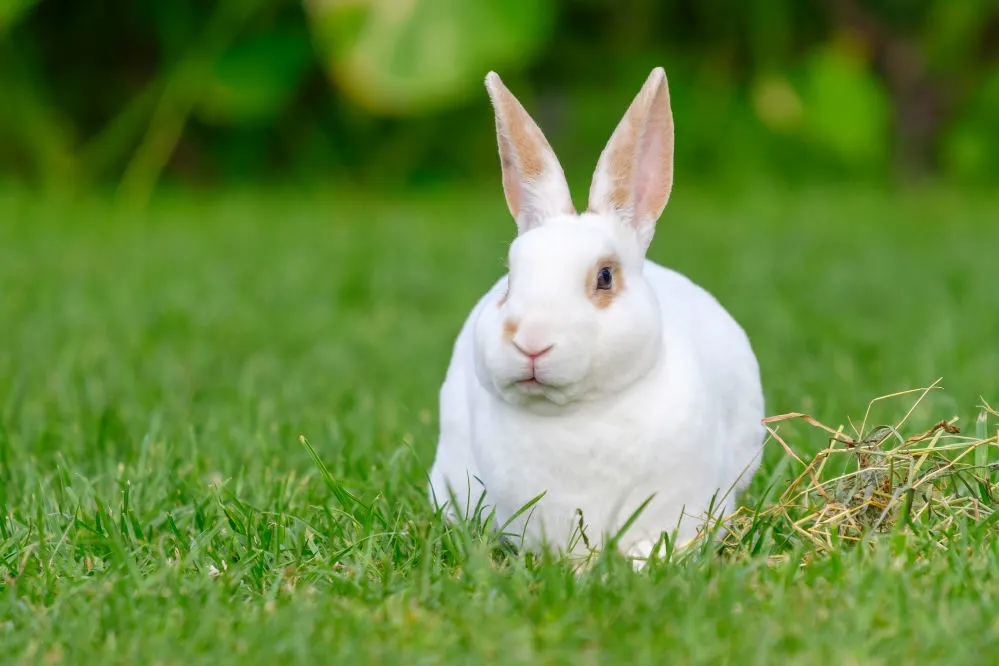Being a pet parent is a full-time job (an enjoyable one). You’re constantly looking for better ways to care for your pet and guarantee their health and happiness.
Rabbit owners know there are no cutting corners. Fine-tuning their routines requires gathering information that’ll help you ensure your bunny is living its best life.
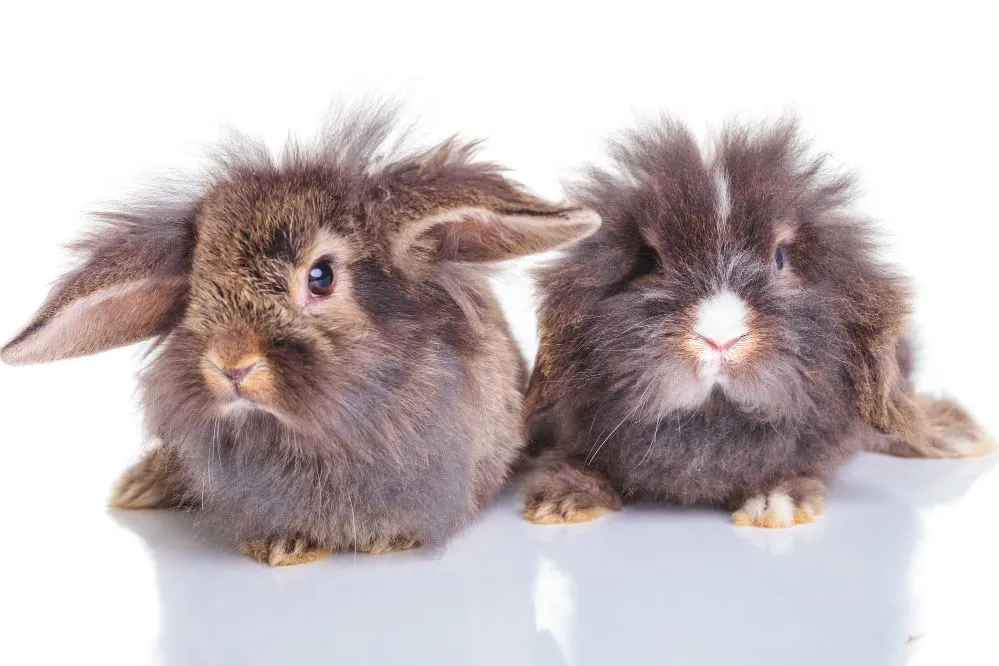
One day you’re fussing about their diets, like whether rabbits can eat strawberry tops. The next day you’re wondering how to take grooming to the next level, like whether shaving your bunny is safe and if they’ve got too much fur. Well, this article contains that answer and so much more.
The following basics will be an easy guide for understanding if and how best to include shaving in your rabbit’s grooming process.
What you need to know about rabbit shedding
Bunnies shed every three months or so, and different rabbit breeds shed in different ways. They experience two types of shedding: light shedding, that’s hardly noticeable, and heavy shedding, which requires your attention. This affects shedding duration as some rabbits shed over a couple of days, while others take a few weeks to lose their old coats.
Because rabbits prefer to keep as tidy as possible, they groom themselves. Like cats, they’ll lick themselves in an attempt to keep clean. However, while cats can vomit to get rid of the hairballs (known as trichobezoars) after ingesting hair, rabbits can’t do the same.
For bunnies, excessive self-grooming raises the risk of hairballs getting stuck in their stomachs. This isn’t a good idea, as it could cause health problems for your four-legged furry, such as gastrointestinal (GI) stasis.
This is why it’s best to get in on the action and ensure you’re doing your part to look after your bunny’s fur. The information below includes the tips you need to do just that.
Brushing bunny fur
For healthy fur, bunnies need to be brushed weekly. For rabbits with too much hair, brushing should occur on a regular basis: roughly every three days. The significance of getting your rabbit accustomed to regular brushing is that they know what to expect when heavy shedding begins. During heavy shedding periods, daily brushings are the order of the day.
First, remove loose fur by gently pulling the hair with your hand. Then brush the fur lightly, removing more fluff, moving in the fur’s natural direction. Don’t be alarmed by the bald spots that may appear when rabbits shed. The hair in those spots should grow back over two weeks.
Remember that routine brushing helps prevent clumped, knotted, and matted fur. Long-haired rabbits need that extra bit of bunny-brushing love.
Rabbit fur is quick to absorb water but takes longer to dry. It’s also important to know that soiled fur needs to be cleaned properly to prevent an often fatal condition called flystrike (or myiasis).
Can you shave a rabbit? What you need to know
The short answer is yes, you can shave your rabbit. But this should only be done when necessary and very carefully.
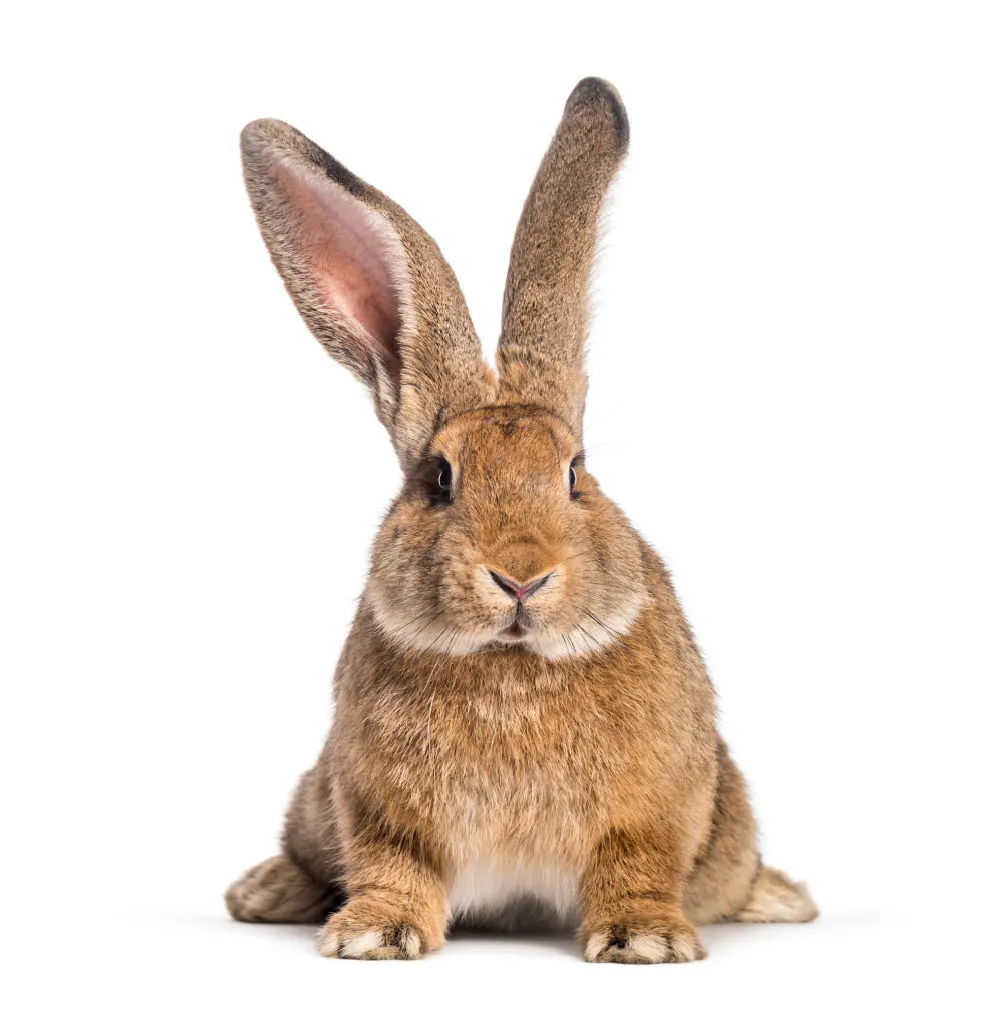
Bunnies have extremely sensitive skin that can get injured easily from shaving. Three reasons might drive you to pull out that pair of grooming scissors or clippers:
- Shaving is suitable when you have a rabbit with stubborn overgrown hair; this can be the case with long-haired breeds.
- Perhaps your bunny suffers heavily from matted fur.
- Sometimes shaving is called upon to help your rabbit regulate its body temperature, particularly during the summer months.
Outside of these reasons, it’s best to err on the side of caution and take extra care when considering shaving your rabbit.
Only mature bunnies over the age of three months old can be shaved when need be. Younger rabbit skin is too delicate. When in doubt, seek a veterinarian’s advice or visit a professional groomer.
How to deal with mats
When the fur is clumped or knotted, you have a matted rabbit. You’ll need to use a mat splitter, comb, or rake to work through the mats until they come apart.
Mats become a problem for you and your rabbit when you neglect to brush them regularly or when their hair is overgrown. Ensure weekly brushing and a set grooming routine to limit matting.
Pro Tip: Due to the sensitivity of a rabbit’s skin, avoid using scissors to cut mats. You might cut the skin on your rabbit’s body, causing it a great deal of pain.
Caring for rabbit skin
Your typical rabbit skin care routine should include checking to ensure they don’t have parasites such as fleas, ticks, or mites. There could also be underlying skin infections if you notice things like inflammation. Any of these problems can cause your bunny discomfort and distress or lead to damaged skin.
Parasites usually target your bunny’s fur, skin, facial, and genital areas. When your rabbit starts scratching or itching or you notice flaky skin, check for parasites. Fleas and ticks are easier to spot, while mites cause a type of dandruff.
Sometimes balding that isn’t linked to standard shedding patterns is also a symptom of parasites. When you suspect parasites, contact your vet for advice on which products to treat your rabbit’s case.
Keeping parasites at bay
It isn’t just outdoor bunnies that can catch fleas. Fleas are also common in homes where indoor rabbits reside with other pets like dogs and cats.
In milder cases, your best weapon is a flea comb. You can easily comb out the fleas and remove them from your rabbit’s fur. Here’s a fair warning, though: flea combing requires patience and tenderness so that your bunny grows to love the process.
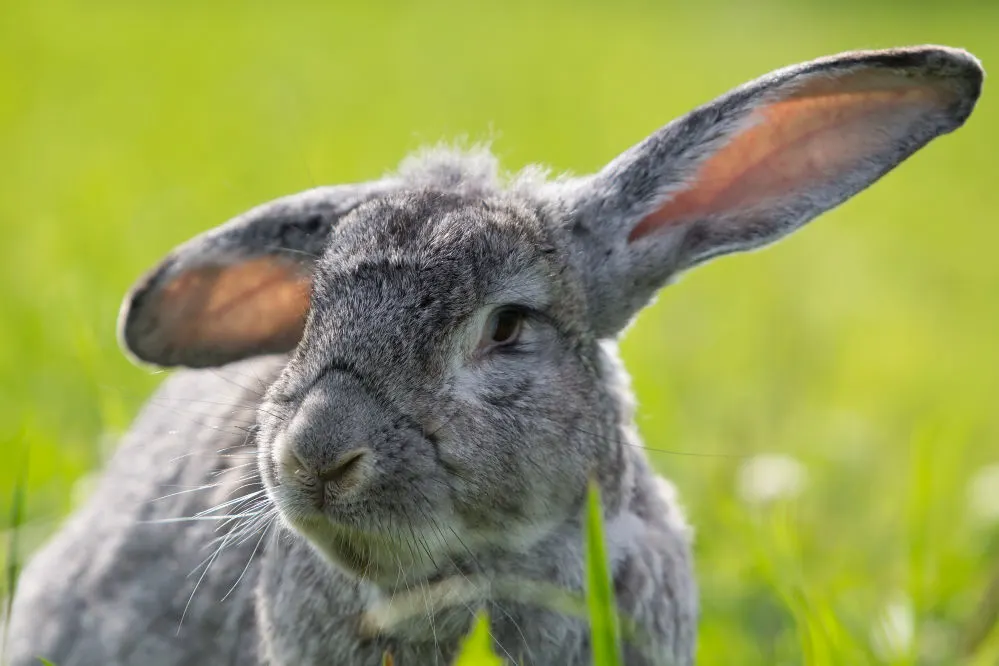
For more severe parasite problems, visit your vet for assistance and medication where necessary. Treatments such as Advantage, Revolution, and Ivermectin are popular prescribed medicines. It’s important to follow your vet’s precise directions and guidelines.
Remember, whether dealing with excessive fleas or mites or feeling a little icky over picking out ticks, a professional will ease your anxiety and the bunnies.
Essential To Know: Avoid flea shampoos, powders, environmental sprays, and bombs. They are not safe for rabbits.
How to shave your rabbit | The process
The shaving process can be tricky. You should watch a professional doing it before trying it yourself.
The following are five basic steps for shaving your rabbit.
Step one: Use a mat splitter to carefully untangle and work through the mats on your bunny’s body.
Step two: Next, remove mats from their feet using the same process as above.
Step three: Comb and brush out the mats on your furry’s neck, working your way down to its chest. They can be fussy about the area under the chin, so don’t force any brushing here if the bunny isn’t agreeing.
Step four: Where the mats are relatively firm, cut them off with an electric clipper. Work against the body so that you don’t cut the skin. The thicker the fur, the more carefully you have to work.
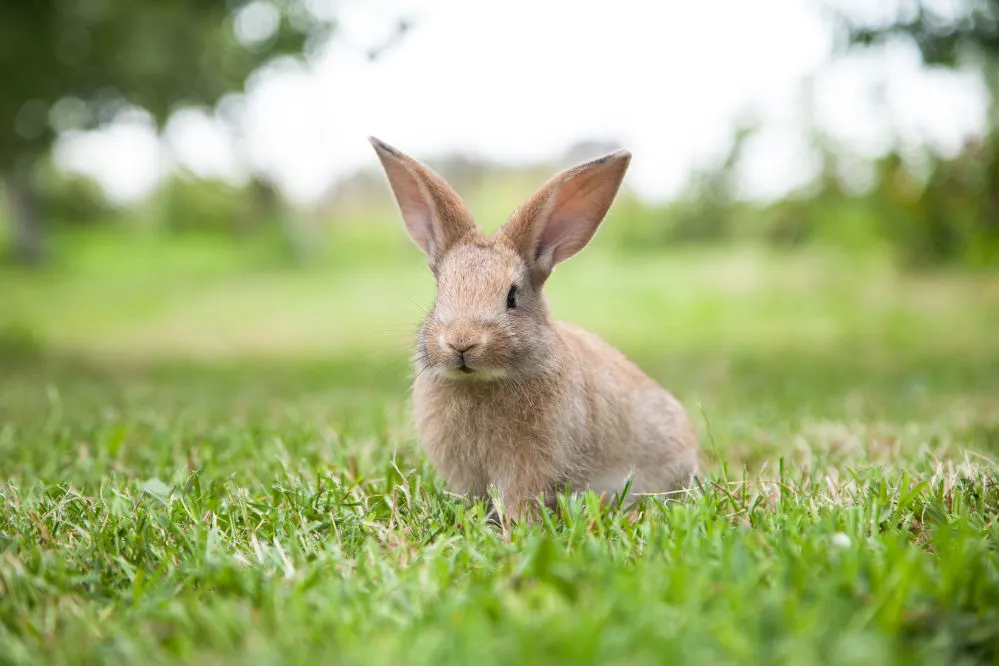
Step five: Do everything to avoid injury and limit bunny discomfort. Sometimes the best way is a combination method. This depends on the number of mats and how knotted they are. Start by cutting or shaving the mat tips and then follow it up by combing the rest out with a splitter or rake.
Tips for shaving your rabbit
- Ensure your bunny is in a comfortable position. It’s best to have your rabbit on all fours on a flat surface. Having them on their backs is dangerous and should be left to expert groomers when necessary.
- Reassure your rabbit and keep it calm during the process.
- When shaving the bunny’s sides, shave in a downward motion.
- You want the whole process to take a manageable amount of time but shave extra carefully as you work.
- Remove excess fur with a brush, especially during shedding periods.
- It is not recommended to shave rabbits completely, and never during rainy seasons.
- Some rabbit owners put a sweater on their bunnies after shaving to help them get used to the new feeling of less fur.
Best shaving methods to use on rabbits
These might not be completely different or isolated shaving methods per se. Think of them as different elements you can combine into your bunny’s grooming routine.
- Brushing with a special brush (like a bristle or slicker brush)
- Combing with a special comb
- Trimming with appropriately sized scissors only if there’s no other choice
- Shaving with clippers
Best grooming tools to use on rabbits
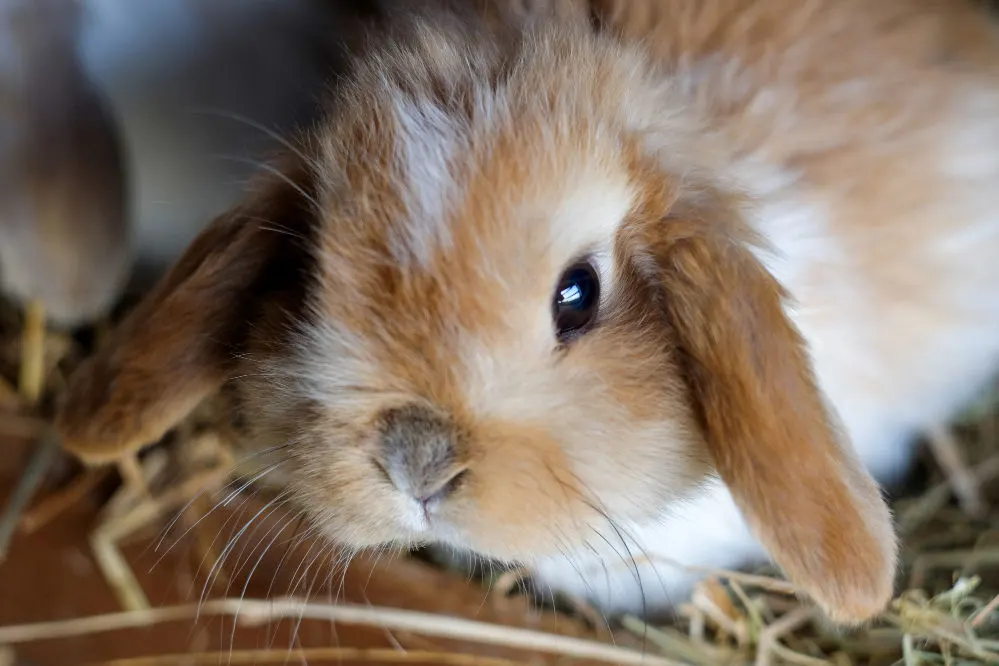
These are the tools you should have in your basic bunny grooming kit.
- Matt splitter or rake
- Flea comb
- Bristle and slicker brush (there are other types of brushes you can collect as part of a larger set)
- Scissors
- Electric clipper (some rabbits fair better with a mini shaver)
- Disinfectant ointment
- Grooming blower
Frequently asked questions
Do rabbits groom themselves?
Yes, they do. They love being clean and taking care of the big task themselves. But this is a risk. If they ingest a lot of their fur, blockages can cause severe gastrointestinal problems.
Be part of the process and use the opportunity to actively care for your bunny while also connecting with them. It is the perfect bonding opportunity, after all.
Is it safe to shave your rabbit?
Only when it’s necessary. Rabbits have fragile skin that needs to be protected as far as possible. Only shave rabbits when dealing with heavily matted bunnies and overgrown coats.
How often should you shave your rabbit?
Only when necessary. Seek advice from a vet and professional groomers to give better guidance after they’ve observed your specific bunny.
Which types of rabbits can be shaved?
Generally, most breeds should be okay for shaving, especially long-haired bunnies. Good examples of those include Angora rabbits. Jersey Wooly rabbits also have long furs, making them good candidates for shaving.
Some rabbits aren’t suitable for shaving, like the American Fuzzy Lop and the Netherland Dwarf, because they are short-haired rabbits.
Which shaving tool is safer: scissors or clippers?
Two-speed clippers are safer for bunny shaving because they can handle a rabbit’s fine hair well. They also allow you to work faster.
Scissors are trickier because accidents can happen quickly. You might end up cutting skin and unintentionally causing pain and injury, which can lead to infection.
Make sure to get expert advice on the best blade selections, remembering never to go for the whole naked look.
Essential To Know: The clipper’s buzzing sound can spook your furry friend at first. Keep your rabbit calm and comfortable throughout the process.
How long does it take for rabbit hair to grow back after shaving?
Depending on the breed, rabbit hair typically takes three to six weeks to grow. Some bunny coats can take up to three months to grow out again.
What are the trickiest shaving and grooming areas?
– The chin area
– In between the legs
– Beneath the feet
– Around the tail
The wrap-up
For a happy, healthy, well-groomed rabbits, there are a few tasks to take care of. The grooming routine should include brushing and trimming their fur, removing mats when they get out of control, and keeping debris out of their hair.
Shaving should only occur when mats are causing you and your bunny headaches or when long, overgrown fur is hard to manage. When you have a well-kept, clean bunny that’s neat, you’ll be able to enjoy your little furry friend that much more.
Keen to read more? Check out some fun rabbit house ideas that can become the perfect new home for indoor and outdoor bunnies.
Steph Dyson is a travel journalist by trade but a lover of all small pets. She’s been a pet mum to everything from gerbils to guinea pigs, rabbits to hamsters, and fish to dogs of all shapes and sizes. She wants to share her years of experience with small pets and make Small Pet Guides the go-to website for pet owners seeking information and care advice.

